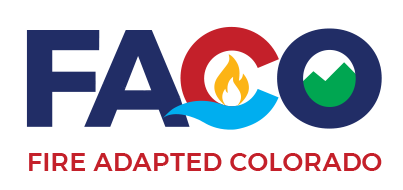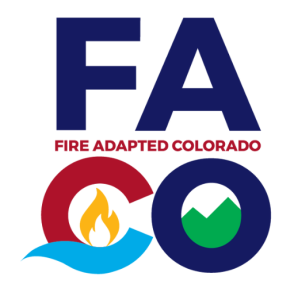Fast Fires: Prioritize Structure Hardening and Defensible Space
It’s only January, and the size and scale of the LA Fires stand as a stark reminder of Colorado’s 2020 Conflagration–the Marshall Fire. With similar speed and spread, the western United States continues to witness a surge in “fast fires”—wildfires that expand rapidly over short periods, posing significant threats to lives, property, and infrastructure. These fast-moving fires are becoming more frequent and severe, necessitating a deeper understanding of their dynamics and the challenges they present.
In a recent PBS Weather Special: Fast Fires, IGES President Nancy Colleton was pleased to work with Ralph Bloemers of the Green Oregon Alliance to examine the important role of NASA data in understanding fast fires:
These types of fire storms require three elements: An ignition source, Dry receptive fuels, and Wind.
Not surprisingly, 3% of fast fires studied (2001-2020) accounted for 88% of damages, a concerning trend moving in the wrong direction.Fire speed, not size, drives threat to people, infrastructure[1]
Research around home destruction vs. home survival in wildfires point to embers and small flames as the main way most homes ignite. Jack Cohen’s research from the late 1990s laid the groundwork for the concept of the Home Ignition Zone (HIZ), which has become a cornerstone in Fire Adapted Communities work. Cohen’s studies emphasized that homes and structures are often vulnerable to wildfire not just from direct flames, but from the radiant heat and flying embers that can ignite materials surrounding them. His work showed that fire can spread to homes through the HIZ, a critical area around a home that includes the building itself, landscaping, and vegetation.
The HIZ concept encourages homeowners and communities to take proactive steps to reduce fire risk by managing vegetation, maintaining defensible space, and using fire-resistant building materials. These practices, rooted in Cohen’s research, have been central to the Fire Adapted Communities movement, which aims to increase community resilience to wildfire by preparing homes, infrastructure, and residents for wildfire risks. By incorporating these principles, communities can better protect themselves from the destructive effects of wildfires – work the Fire Adapted Colorado Network supports, including the Neighborhood Ambassador Approach.
Read (Cohen/Pyne) article: Inconvenient truths about the fires burning in Los Angeles from two fire experts [2]
The Palisades Fire, which ignited near the Pacific Palisades neighborhood in Los Angeles on January 7, 2025, exemplifies the destructive potential of fast fires. Within hours, the fire expanded rapidly, leading to mandatory evacuations along sections of the Pacific Coast Highway and surrounding areas. By January 9, the fire had burned over 23,000 acres, with containment efforts hampered by strong winds and dry conditions.
The impact of the Palisades Fire has been devastating:
- Casualties: At least eleven civilian fatalities have been confirmed.
- Structural Damage: 6,662 structures have been destroyed, including homes, businesses, and cultural landmarks. Another 890 are damaged.
The Eaton Fire sparked a few hours later in the northeast portion of the county near Pasadena and Altadena. It is currently reporting 91% containment at 14,021 acres.
The impact of the Eaton Fire destroyed even more structures and claimed more lives than the Palisades Fire:
- Casualties: At least seventeen civilian fatalities have been confirmed.
- Structural Damage: 9,418 structures have been destroyed, including homes, businesses, and cultural landmarks. Another 1,073 are reported as damaged.
Total Economic Impact:
“To put the magnitude of loss into context, this latest damage and economic loss estimate surpasses the numbers for the entire 2020 wildfire season.” AccuWeather estimates more than $250 billion in damages and economic loss from LA wildfires [3]
Unintended Consequences:
Insurance Industry
- Rate Increases, Availability, Affordability, and Insolvency are all potential impacts as the LA Fires could remake the insurance industry. [4]
Inflation
- Elevated construction sector costs, supply chain disruptions and housing market pressure will likely impact prices locally and regionally.
Gentrification
- Past wildfires and other natural disasters have driven gentrification. The LA fires could rapidly intensify gentrification as relocations further strain existing housing markets. America’s Housing Crisis: A 20-Year Perfect Storm [5]
[1] NSF NCAR | Staff | October 30, 2024
[2] Los Angeles Times | Thomas Curwen | January 11, 2025
[3]AccuWeather | Monica Danielle, Managing Editor | Published Jan 13, 2025 1:49 PM MST | Updated Jan 16, 2025 5:28 AM MST
[4]Harvard Business Review | Tom Johansmeyer | January 22, 2025
[5]ScienceBlog.com | USC | January 15, 2025

